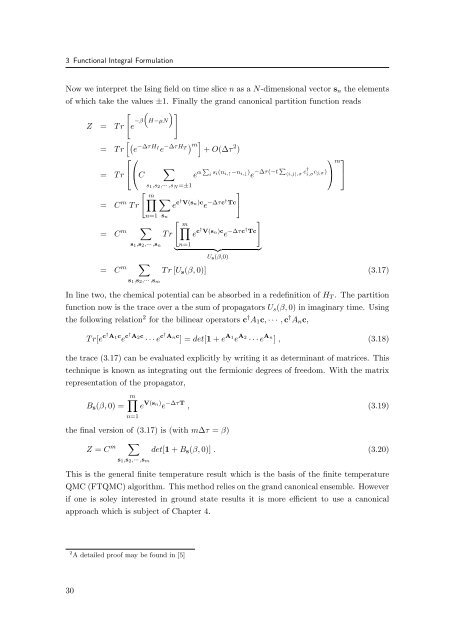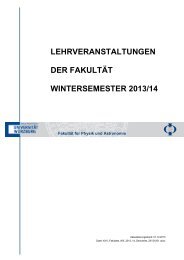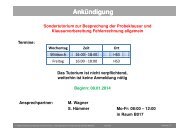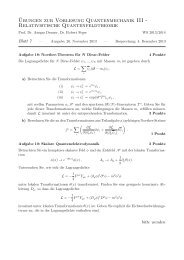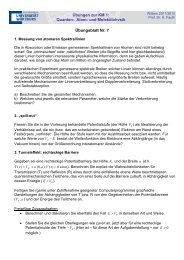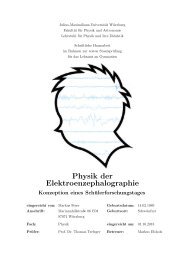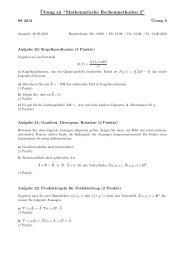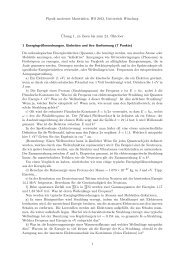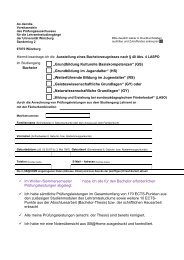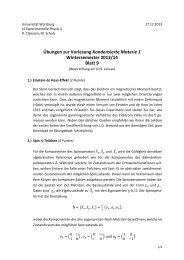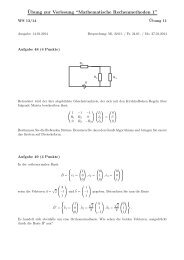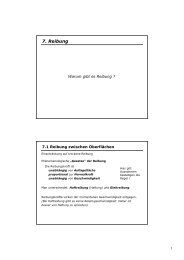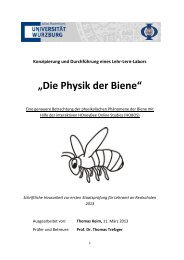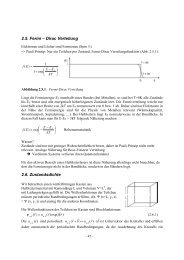Magnetic Field Induced Semimetal-to-Canted-Antiferromagnet ...
Magnetic Field Induced Semimetal-to-Canted-Antiferromagnet ...
Magnetic Field Induced Semimetal-to-Canted-Antiferromagnet ...
Create successful ePaper yourself
Turn your PDF publications into a flip-book with our unique Google optimized e-Paper software.
3 Functional Integral Formulation<br />
Now we interpret the Ising field on time slice n as a N-dimensional vec<strong>to</strong>r sn the elements<br />
of which take the values ±1. Finally the grand canonical partition function reads<br />
�<br />
Z = T r e −β<br />
� ��<br />
H−µN<br />
��e−∆τHI −∆τHT = T r e �m �<br />
⎡⎛<br />
= T r ⎣⎝C<br />
�<br />
s1,s2,··· ,sN =±1<br />
+ O(∆τ 2 )<br />
= C m �<br />
m� �<br />
T r e c† V(sn)c −∆τc<br />
e † �<br />
Tc<br />
n=1<br />
�<br />
m<br />
= C<br />
s1,s2,··· ,sn<br />
�<br />
m<br />
= C<br />
s1,s2,··· ,sm<br />
sn<br />
P<br />
α<br />
e i si(ni,↑−ni,↓) −∆τ(−t<br />
e P<br />
〈i,j〉,σ c†<br />
i,σcj,σ) �<br />
m�<br />
T r e c† V(sn)c −∆τc<br />
e † �<br />
Tc<br />
n=1<br />
� �� �<br />
Us(β,0)<br />
⎞m⎤<br />
T r [Us(β, 0)] (3.17)<br />
In line two, the chemical potential can be absorbed in a redefinition of HT . The partition<br />
function now is the trace over a the sum of propaga<strong>to</strong>rs Us(β, 0) in imaginary time. Using<br />
the following relation 2 for the bilinear opera<strong>to</strong>rs c † A1c, · · · , c † Anc,<br />
T r[e c† A1c e c † A2c · · · e c † Anc ] = det[1 + e A1 e A2 · · · e An ] , (3.18)<br />
the trace (3.17) can be evaluated explicitly by writing it as determinant of matrices. This<br />
technique is known as integrating out the fermionic degrees of freedom. With the matrix<br />
representation of the propaga<strong>to</strong>r,<br />
Bs(β, 0) =<br />
m�<br />
n=1<br />
e V(sn) e −∆τT , (3.19)<br />
the final version of (3.17) is (with m∆τ = β)<br />
Z = C m<br />
�<br />
det[1 + Bs(β, 0)] . (3.20)<br />
s1,s2,··· ,sm<br />
This is the general finite temperature result which is the basis of the finite temperature<br />
QMC (FTQMC) algorithm. This method relies on the grand canonical ensemble. However<br />
if one is soley interested in ground state results it is more efficient <strong>to</strong> use a canonical<br />
approach which is subject of Chapter 4.<br />
2 A detailed proof may be found in [5]<br />
30<br />
⎠<br />
⎦


